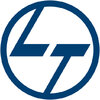Filter interviews by
ATS Infrastructure Land Surveyor Interview Questions and Answers
ATS Infrastructure Land Surveyor Interview Experiences
2 interviews found

(3 Questions)
- Q1. How to control deviation in vertically elements.
- Ans.
To control deviation in vertically elements, proper leveling techniques and equipment must be used.
Use a precise leveling instrument such as a digital level or an automatic level
Ensure the instrument is properly calibrated before use
Establish a benchmark or reference point for vertical control
Use a leveling rod or staff to measure height differences accurately
Perform regular checks and adjustments during the survey to ...
- Q2. How will cross check column position
- Ans.
Cross checking column position in land surveying
Cross check column position by comparing measurements from different surveying techniques
Use multiple surveying instruments to verify column positions
Compare measurements with existing reference points or benchmarks
Ensure accuracy by repeating measurements and averaging the results
Document and record all measurements and cross-checking steps for future reference
- Q3. How to control plastering thikness
- Ans.
To control plastering thickness, proper preparation, use of guides, and regular measurements are essential.
Ensure the surface is clean and free from debris before applying plaster.
Use guides such as screeds or battens to maintain a consistent thickness.
Regularly measure the thickness using a measuring tape or a thickness gauge.
Adjust the amount of plaster applied based on the measurements to achieve the desired thickne...
Interview Preparation Tips
Get your positive response to the interviewer.
Skills evaluated in this interview
I applied via Naukri.com and was interviewed in Jul 2022. There were 2 interview rounds.

(1 Question)
- Q1. Only Salary negotiable,
Interview Preparation Tips
Top trending discussions






Interview questions from similar companies

Interview Questionnaire
2 Questions
- Q1. Related to survey
- Q2. Civil survey infrastructure

Interview Questionnaire
14 Questions
- Q1. I am Mr. Rinku yadav
- Q2. Land surveyo job in Raipur chhatteesagadh
- Q3. Land surveyo layaut prograam
- Q4. Auto cad & all surveyo Point my responsebliti
- Q5. For building to Constitution side
- Q6. To line marking auto level leveling
- Q7. For other pointa land scaping
- Q8. To drange to ceber line to catch bacen line
- Q9. For chaimber Point to
- Q10. All question
- Q11. Soil leveling
- Q12. Road marking
- Q13. To road & karv stone
- Q14. Point all marking
Interview Preparation Tips
I applied via Walk-in and was interviewed in Jan 2022. There were 2 interview rounds.

(3 Questions)
- Q1. What is least count of total station
- Ans.
The least count of a total station is the smallest measurement that can be accurately read or recorded by the instrument.
The least count is determined by the precision of the instrument's internal components.
It is typically expressed in units of distance, such as millimeters or seconds of arc.
For example, if the least count of a total station is 5mm, it means that the instrument can measure distances accurately to the ...
- Q2. What is height of mini prism
- Ans.
The height of a mini prism varies depending on the manufacturer and model.
Mini prisms are used in surveying to measure distances and angles.
The height of a mini prism is typically between 25mm to 50mm.
The height of a mini prism can affect the accuracy of the surveying measurements.
It is important to use the correct height of mini prism for the specific surveying task.
Manufacturers usually provide the height of their mi
- Q3. What is least count of auto level
- Ans.
The least count of an auto level is the smallest measurement that can be read on the instrument.
The least count is determined by the size of the divisions on the instrument's scale.
It is usually expressed in millimeters or fractions of an inch.
For example, if the least count is 0.5 mm, the instrument can measure differences in elevation of 0.5 mm or greater.
The least count can vary depending on the make and model of th
Interview Preparation Tips
(5 Questions)
- Q1. Topography survey
- Q2. Lay out coordinate
- Ans.
Laying out coordinates involves marking specific points on the ground based on their x, y, and sometimes z values.
Use a total station or GPS device to accurately measure and record coordinates
Mark points with stakes, flags, or paint for future reference
Ensure coordinates are recorded in the correct datum and projection for accurate mapping
- Q3. Auto level for elevation
- Ans.
Auto level is a surveying instrument used to measure height differences in the field.
Auto level uses a compensator to ensure accurate readings even on uneven terrain.
It is commonly used in construction, land development, and road building projects.
The instrument is set up on a tripod and the surveyor looks through the eyepiece to read the height difference on a graduated staff.
Auto levels are preferred for their ease o...
- Q4. Trivers for taget point
- Ans.
Trivers for target point refers to the process of using trigonometry to calculate the coordinates of a specific point on a surveying site.
Trivers formula involves using angles and distances to calculate the coordinates of a target point.
It is essential for accurate land surveying and mapping.
Example: If you have the angle and distance measurements from two known points, you can use Trivers formula to calculate the coor
- Q5. Tp point for set out
- Ans.
A point for set out is a reference point used by surveyors to mark the location of specific points on a site.
Set out points are typically marked with stakes, nails, or paint on the ground.
These points are used to guide construction workers in accurately placing structures or boundaries.
Surveyors use measurements and calculations to determine the exact coordinates of set out points.
Interview Preparation Tips
I applied via Referral and was interviewed in Oct 2021. There was 1 interview round.
Interview Questionnaire
1 Question
- Q1. How many year of experience do you have
Interview Preparation Tips
Interview Questionnaire
1 Question
- Q1. How to work on side with Total station
- Ans.
Working on site with a Total Station involves setting up the instrument, taking measurements, and recording data.
Set up the Total Station on a stable tripod at a known point on the site.
Calibrate the instrument by leveling it and orienting it to true north.
Take measurements by aiming the Total Station at specific targets and recording the angles and distances.
Use the data collected to create accurate maps, plans, or bo...
I applied via Walk-in and was interviewed in Mar 2022. There were 2 interview rounds.

(1 Question)
- Q1. What are your salary expectations?
Interview Preparation Tips

Interview Questionnaire
7 Questions
- Q1. Convert quadrant bearing to whole circle bearing.
- Ans.
To convert quadrant bearing to whole circle bearing, add 90 degrees to the quadrant bearing.
Quadrant bearings range from 0 to 90 degrees.
Whole circle bearings range from 0 to 360 degrees.
To convert, add 90 degrees to the quadrant bearing.
For example, a quadrant bearing of N45°E would become 135°.
- Q2. What is contour.
- Ans.
Contours are lines on a map that connect points of equal elevation, representing the shape and relief of the land.
Contours are used in land surveying to depict the topography of an area.
They connect points of equal elevation, allowing surveyors to visualize the shape and relief of the land.
Contours are typically represented as curved lines on a map, with each line representing a specific elevation.
The spacing between c...
- Q3. How to find out angle and distance a polygon.
- Ans.
To find out the angle and distance of a polygon, you can use trigonometry and surveying techniques.
Measure the lengths of each side of the polygon using a tape measure or surveying equipment.
Use a theodolite or total station to measure the angles between each side of the polygon.
Apply trigonometric formulas to calculate the angles and distances based on the measured values.
For example, you can use the Law of Cosines to...
- Q4. What is UTM
- Ans.
UTM stands for Universal Transverse Mercator. It is a coordinate system used to locate positions on the Earth's surface.
UTM is a grid-based system that divides the Earth into 60 zones, each 6 degrees of longitude wide.
It uses a metric coordinate system, with eastings and northings measured in meters.
UTM coordinates consist of a zone number, hemisphere (N or S), easting, and northing.
For example, a UTM coordinate might ...
- Q5. What is WGS
- Ans.
WGS stands for World Geodetic System, a standard reference system used for mapping and surveying the Earth.
WGS is a global coordinate system used to accurately represent the Earth's surface.
It provides a consistent framework for measuring and locating points on the Earth's surface.
WGS is commonly used in GPS navigation, cartography, and land surveying.
It uses latitude and longitude coordinates to define positions on th...
- Q6. How to work GPS
- Ans.
Working with GPS involves understanding its functions, using the correct equipment, and interpreting the data accurately.
Learn the basic functions of GPS devices and how to operate them.
Ensure that the GPS device is properly calibrated and has a clear view of the sky for accurate readings.
Use the appropriate GPS equipment for the specific surveying task, such as a handheld GPS unit or a survey-grade GPS receiver.
Unders...
- Q7. How many satellites want there gps receiver.
- Ans.
The number of satellites a GPS receiver wants depends on its accuracy requirements and the availability of satellite signals.
The minimum number of satellites required for a GPS receiver to function is 4.
Most GPS receivers aim to acquire signals from at least 8 to 12 satellites for better accuracy.
The more satellites a GPS receiver can track, the more accurate its positioning and timing information becomes.
GPS receivers...
ATS Infrastructure Interview FAQs
Tell us how to improve this page.
ATS Infrastructure Interviews By Designations
- ATS Infrastructure Legal Manager Interview Questions
- ATS Infrastructure Land Surveyor Interview Questions
- ATS Infrastructure Site Engineer Interview Questions
- ATS Infrastructure Civil Foreman Interview Questions
- ATS Infrastructure Assistant Project Manager Interview Questions
- ATS Infrastructure Business Analyst Interview Questions
- ATS Infrastructure Associate Consultant Interview Questions
- ATS Infrastructure Planning Analyst Interview Questions
- Show more
Interview Questions for Popular Designations
- Surveyor Interview Questions
- Quantity Surveyor Interview Questions
- Senior Surveyor Interview Questions
- Senior Land Surveyor Interview Questions
- Senior Quantity Surveyor Interview Questions
- Civil Surveyor Interview Questions
- Assistant Quantity Surveyor Interview Questions
- Civil Quantity Surveyor Interview Questions
- Show more
Interview Questions from Similar Companies
ATS Infrastructure Land Surveyor Reviews and Ratings
based on 3 reviews
Rating in categories
|
Project Engineer
66
salaries
| ₹4.2 L/yr - ₹8 L/yr |
|
Assistant Manager
54
salaries
| ₹4.2 L/yr - ₹9.1 L/yr |
|
Civil Foreman
42
salaries
| ₹2.8 L/yr - ₹5.2 L/yr |
|
Senior Project Engineer
38
salaries
| ₹5.4 L/yr - ₹8.4 L/yr |
|
Assistant Project Manager
32
salaries
| ₹7.1 L/yr - ₹11 L/yr |

Sobha

Lodha Group

Cushman & Wakefield

Godrej Properties
- Home >
- Interviews >
- ATS Infrastructure Interview Questions >
- ATS Infrastructure Land Surveyor Interview Questions















